harnessing energy, altering lives







Alternergy would like to thank its sustainability consultants, Raoul Pérez and Ryan Bestre, for their guidance in the drafting of this 2021 Sustainability Report.
All rights reserved. This report or any portion thereof may not be reproduced or used in any manner whatsoever without the express written permission of the Alternergy Holdings Corporation.
Jerry Manalili, Creative Director Aerish Sta. Ana, Art DirectorThis is the inaugural Sustainability Report of Alternergy Holdings Corporation presenting its strategy for sustainability in terms of economic, social, and governance, as well as its commitment to the United Nations Sustainable Development Goals.
This report was prepared in accordance with the Global Reporting Initiative (GRI) Standards Core option which includes the GRI Disclosures on Stakeholder Engagement and Materiality Topics among other topics as contained in the GRI Content Index. The report also includes references to GRI Disclosures 102-40 (Stakeholder Engagement) and 102-49 (Reporting Practice) as seen in various sections of the report. Further, this is in compliance with the Securities and Exchange Commission Memorandum Circular No. 4 Series of 2019: “Sustainability Reporting Guidelines for Publicly Listed Companies.” No External Assurance was used.

this report
 Kirahon Solar Farm, Misamis Oriental
Kirahon Solar Farm, Misamis Oriental
The COVID-19 pandemic has made us shift our perspectives, putting more importance on people, the environment, and sustainability. At Alternergy, these have always been part of our priorities. In this inaugural Sustainability Report, we will put a spotlight on the way we do our business which is guided by our quadruple bottom line philosophy. That is, ensuring financial profitability while contributing to carbon mitigation and community development, and promoting employee satisfaction.
As a bright spot for renewable energy investors, Alternergy is focusing on developing renewable power projects in the Philippines. Rising electricity demand, significant renewable energy resources, conducive tariffs, and a comprehensive Renewable Energy Law are good indicators for renewable energy investment.
Consistent with our thrust for environmental sustainability, our portfolio of assets is expected to avoid 139,090 tons of carbon dioxide equivalent. Not only do we generate electricity that reduces emissions, but our electric production also does not negatively affect air and water quality. We, likewise, do our best to conduct project activities that are in harmony with nature.
For our host communities, we provide financial support for
impact-driven initiatives on the environment, health, education, and livelihood. We proactively respond to disasters wherein, in the past few years, we were able to distribute relief goods in typhoonstricken areas. During the pandemic, we donated medical equipment, PPE and meals for frontliners, and rice and cash for low-income families.
Finally, we acknowledge the collective effort of our employees in achieving our milestones as a company. Thus, we strive to keep employee satisfaction high by cultivating a work environment that is balanced, challenging, and fun. Aside from compensation and benefits, we constantly create opportunities for self-development and career growth for all employees. In response to COVID-19, workfrom-home set-up was established, and health and safety guidelines were put in place.
As we are slowly transitioning to a new normal, we commit to working towards a better normal. We believe, with the support of our stakeholders, we can create a future that is regenerative, equitable, and truly sustainable.
Sincerely, Vincent S. Pérez, Jr.

102-14
The latest report from the Intergovernmental Panel on Climate Change once again highlights the severity and worsening impacts of climate change, the warning of reaching irreversible tipping points, and the urgency of reducing greenhouse gas emissions. As a renewable energy developer, Alternergy recognizes its role in contributing to climate mitigation.
The climate crisis and COVID-19 recovery can be addressed through the expansion of renewable energy in the Philippines. Coal remains to have the largest share in the country’s energy mix and there is still untapped development potential for renewables. Alternergy is capitalizing on this.
Since 2008, the company has served as a clean energy pioneer in the Philippines, bringing to life standard-setting wind, solar, and hydro, floating solar and battery storage power projects that pave the way for future renewables growth. Currently, Alternergy has 67.24 MW of installed renewable power. Rapid growth is anticipated with a pipeline of assets under development, with potential installed capacity of up to 1,465 MW.
Renewable energy can diversify the energy sources of the Philippines by reducing its reliance on imported fossil fuels thereby
contributing to energy security. Other benefits are emission reduction, job generation, and cleaner air. In addition, electricity prices in isolated places can be reduced. At Alternergy, we see renewables as the way to go. It is a solution to climate change, it can build resilience, and it can foster economic development. We hope you continue working with us towards this endeavor.
Sincerely,
Gerry P. Magbanua

The current company structure is outlined in the figure on the right with the ownership stake marked by percentages. The ownership percentages are subject to change in the near term, as Alternergy is in the process of securing project equity from a number of interested equity partners. It also acquires projects through partnerships with developers in the early stage of project development to optimize potential returns and to achieve economies of scale quickly. Each asset will be funded with project finance, using local currency whenever available to reduce exchange risk. All these subsidiaries are included in the consolidated financial statements.
Alternergy has ownership interests in wind, solar, run-of-river hydro, and electricity retail assets.
100.00%
Alternergy Tanay Wind Corp (Tanay, Alabat, Abra de Ilog Wind Projects)
61.03%
Alternergy Holdings Corporation (Formerly Alternergy Viento Partners Corp)
100.00%
Pililla AVPC Corporation
Alternergy Hydro Partners Corp
100.00%
Alternergy Mini Hydro Holdings Corp
60.00%
Solar Pacific Energy Corp
Alternergy Sembrano Wind Corp Alternergy Wind One Corp (Pililla Wind Project)
5.00% 15.00%
Calavite Passage Wind (Offshore Wind)
5.00% 4.00%
Kiangan Mini Hydro Corp Dupinga Mini Hydro Corp Ibulao Mini Hydro Corp
100.00% 100.00% 100.00%
Lamut-Asipulo
Mini Hydro Corp
25.00% 25.00%
100.00% 12.70%
Green Energy Supply Solutions (RES)
Green Energy Supply Solutions (RES)
100.00% 100.00% 49.97%
Kirahon Solar Energy Corp Solar Pacific CitySun Corp Solana Solar Alpha Inc Solar Pacific Pristine Power
10.00%
Alternergy’s senior partners, led by former Philippine Energy Minister Vince Pérez, collectively bring a depth of experience and expertise across all stages of the development process.
They are pioneers in wind, solar, and run-of-river hydro power development in the Philippines, and have extensive experience in energy policy, land tenure acquisition, negotiating local project debt finance, and permitting and regulatory compliance.
for Alternergy Sembrano, and Green Energy Supply Solutions, Alternergy’s Retail Electricity Supplier subsidiary. Prior to becoming President, Gerry was Chief Financial Officer at Alternergy.

A former coal-fired power plant finance executive, one of Gerry’s aims is to demonstrate that renewable energy development can be financed as easily and effectively as fossil fuel projects. After spending time as an auditor for the power industry with EY affiliate company SGV, Gerry was with InterGen, a greenfield power developer, responsible for financial modeling and assets and contracts management.

the company. An engineer by training, Knud oversees Alternergy’s operations and technical approaches. Knud believes in developing the structures and processes that will not only help Alternergy grow its renewable power offering, but will also open doors for other clean power players to contribute new development for the Philippines.

Prior to Alternergy, Knud served as SVP at NEG Micon, one of the world’s leading wind turbine manufacturers. He also founded the Moorland Group, a firm which primarily invests in Asia-based renewable power projects.
socially, environmentally, and economically sound, benefitting both local citizens and lenders for the long term.
Eduardo is an experienced finance executive with a global career that spans almost every form of banking. His finance posts include serving as Director and Head of Corporate Finance for Merill Lynch Securities Philippines, Managing Director and Head of Philippine Investment Banking operations at Macquarie Securities Philippines, and Senior Investment Officer and Hub Leader for IFC in the Philippines.
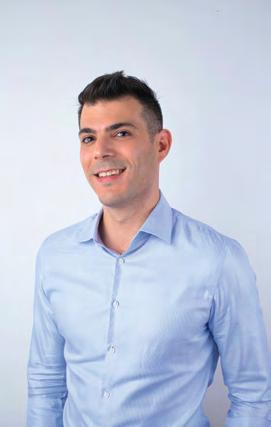

Janina is Vice President and General Counsel of Alternergy and as such acts as internal legal, regulatory, and contractual advisor to the Company. Her experience and expertise span all stages of power plant project development, as well as energy and electric power industry regulation. Janina started her career as an associate at Puno Law Offices and then went on to work as in-house counsel (Assistant Vice President) at First Gen Corporation and the First Gas Group of Companies, where she also served as Corporate Secretary. She was later seconded to Energy Development Corporation after its acquisition by First Gen in 2007.
Janina established an independent consultancy after her stint at EDC, advising clients engaged in developing and operating natural gas, geothermal, hydro, wind, and solar power plants. Prior to joining Alternergy in May 2021, Janina was Legal Group Head at Federal Land, Inc., one of the largest real estate developers in the country, and co-founded Winnergy Holdings Corp., the renewable energy company that built and operated the first ever floating solar farm in the Philippines.

company. Mike has been at the helm of developing the 12.5MWp Kirahon solar power project—the first large-scale solar photovoltaic (PV) project in the Philippines to be built under a bilateral power supply with a local utility, and the first bilateral solar agreement to be approved by the country’s Energy Regulatory Commission.
Throughout his career, Mike has closed more than $250 million in solar project financings. Prior to Alternergy, Mike served as Director of Utility Solar Development at SunEdison. He started out in the financial industries, in roles including working in investment banking at UBS, and conservation finance at The Nature Conservancy - Indonesia.
The Philippines is a place of abundant natural resources and unique biodiversity. It’s also one of the countries most susceptible to climate change. Alternergy focuses on helping the Philippines achieve its renewable energy potential through the development of wind, solar, and run-of-river hydro power projects across the country.

Wind
Pililla, Rizal
Gabaldon, Nueva Ecija
Kiangan, Ifugao
Solar
Villanueva, Misamis Oriental
Dau, Pampanga
Boracay, Aklan
Kalibo, Aklan Victorias, Negros Occidental
Cadiz, Negros Occidental
Mandalagan, Negros Occidental
San Carlos, Negros Occidental
San Enrique, Negros Occidental
Kabankalan, Negros Occidental
Dumaguete, Negros Oriental
Tagum, Davao
Babeldaob, Palau
how we work
Alternergy’s approach is grounded in the following principles:
First and foremost, we are developers. At times, we acquire projects through partnerships with other developers in a project’s early stages with the goal of quickly achieving economies of scale.
We value our project lenders as long-term partners. Every project we undertake is funded with non-recourse project finance, using local currency whenever available to reduce foreign exchange risk.
Alternergy is known for getting projects done on time and within budget. Our intensive project management and cost control methods mitigate possible construction delays and cost overruns.
Finally, we proactively engage in renewable policy discussions. We participate in local consultations with relevant government agencies and working groups of the Department of Energy, the Energy Regulatory Commission, and National Renewable Energy Board.

Alternergy prides itself for being a pioneer of renewable power in the country. Our credentials and achievements speak of our proven capability to successfully complete projects. With all these, we recognize the value of partnerships that help us achieve our goals in promoting clean energy.
Alternergy is a company of “firsts,” driven to establish new precedents that drive the development of clean energy in the Philippines. We seek out opportunities to tread new paths that lead to positive long-term change for the industry.
Across Alternergy’s portfolio of projects, we demonstrate proven capability to deliver in a well-planned and cost-effective way. From securing power supply agreements with local utilities and private commercial customers, to working effectively with permitting agencies, we have shown creativity and resilience on the way to achieving our goals.
Alternergy takes pride in its ability to meet even the most ambitious of construction deadlines—prudently setting aside contingencies in plant construction, handling importation and transport logistics of equipment, and reliably managing sites once they are in operation—all while adhering to health, safety and environment protection best practices.
We see our work through the lens of partnerships: We find the people and organizations who will complement our efforts and support our vision to make the Philippines a leader in clean energy. Communities, government agencies, lenders, co-investors, corporates, and local utilities come together to build projects that will impact the country’s energy future.
For instance, wind and water resources are independently assessed for wind and hydro projects to check their technical feasibility which include environmental, safety, and logistical considerations. All major permits have to be obtained. An offtake through a power sale agreement or feed in tariff allotment will have to be secured.
In addition, social acceptability for each project has to be nurtured in the form of local government endorsements or from free and prior informed consent, for example, from indigenous peoples for any project to be located within their ancestral domains.
our value chain
For every project of Alternergy, various studies, assessments, and due diligence are done to ensure its viability.
Viable wind resource measured over time Transport logistics feasible to transport wind turbine components to site
Land tenurial rights (lease, purchase) over wind farm site and transmission line access
Height clearance from CAAP
Available uncongested interconnection to national grid
Long term power purchase agreement
Land tenurial rights (lease, purchase)
Land not subject to flood risk, geohazard risk, shadow effect, high wind speed
Land zonal classification (not agricultural)requires special DAR conversion order
Available uncongested interconnection to national grid
Long term power purchase agreement
Hydrology resource measured over time
Geohazard geotechnical studies
Consent from indigenous peoples ancestral domain
National water regulatory board (NWRB) permit to tap water resource without affecting irrigation (which has priority)
Selection of experienced civil works contractor
Available uncongested and not too distant interconnection to national grid
Tree cutting permit during construction
Long term power purchase agreement
We work with technical consultants, equipment suppliers, lenders and financing partners, construction and civil works contractors, and land owners.
Collaboration with these service providers contributes to the success of each Alternergy project. While the main criteria of choosing partners is their proven track record, we endeavor to work with individuals and companies who share our vision and values towards sustainability.





























The case studies that follow provide a glimpse of Alternergy’s initiatives in three renewable energy resources: wind, solar, and run-of-river hydro.

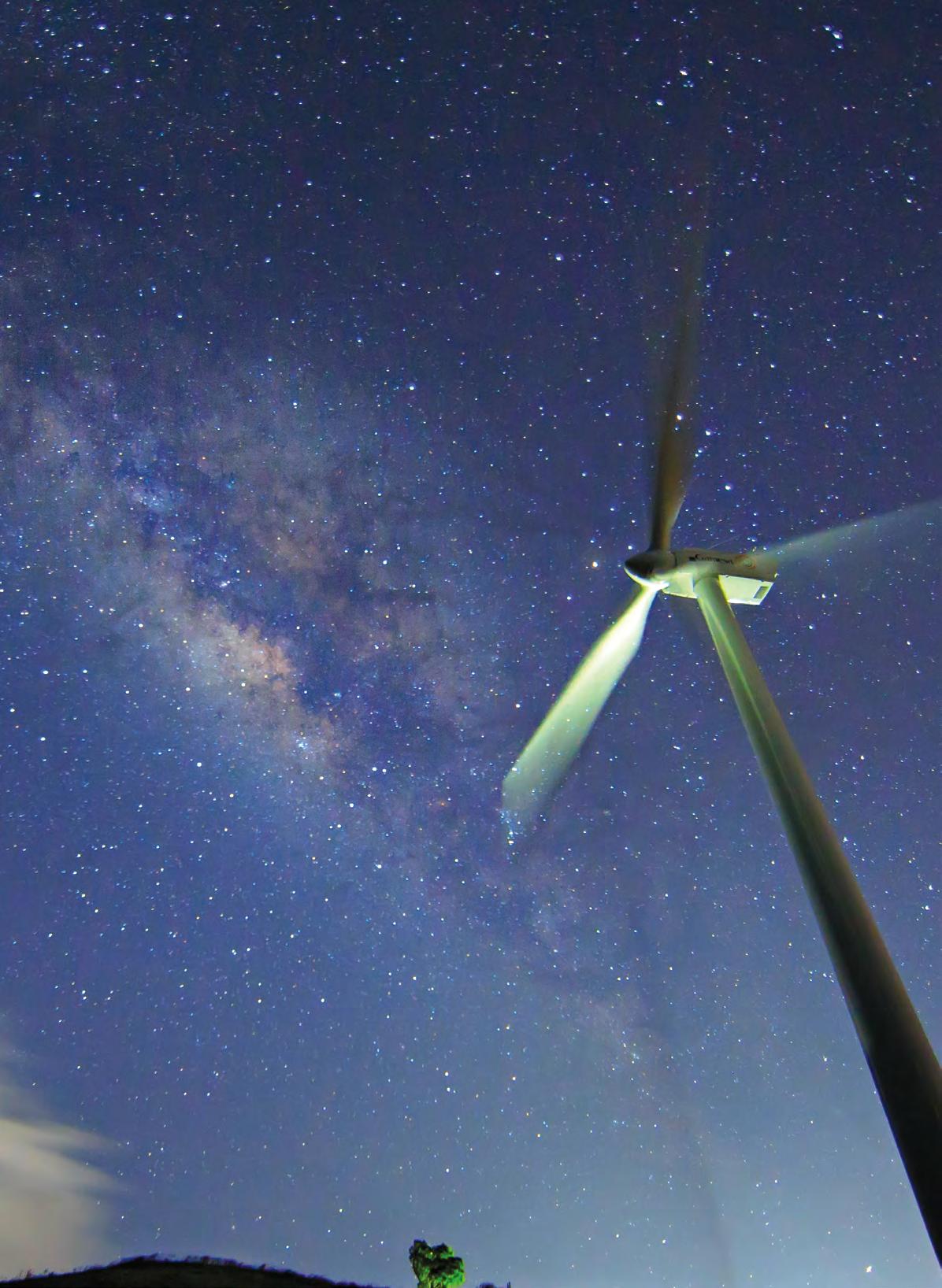 Pililla Wind Farm, Rizal
Pililla Wind Farm, Rizal
Project Highlights Received IFC Sustainable Energy Finance Award
First non-recourse project financing for a Feed-in-Tariff project in the Philippines
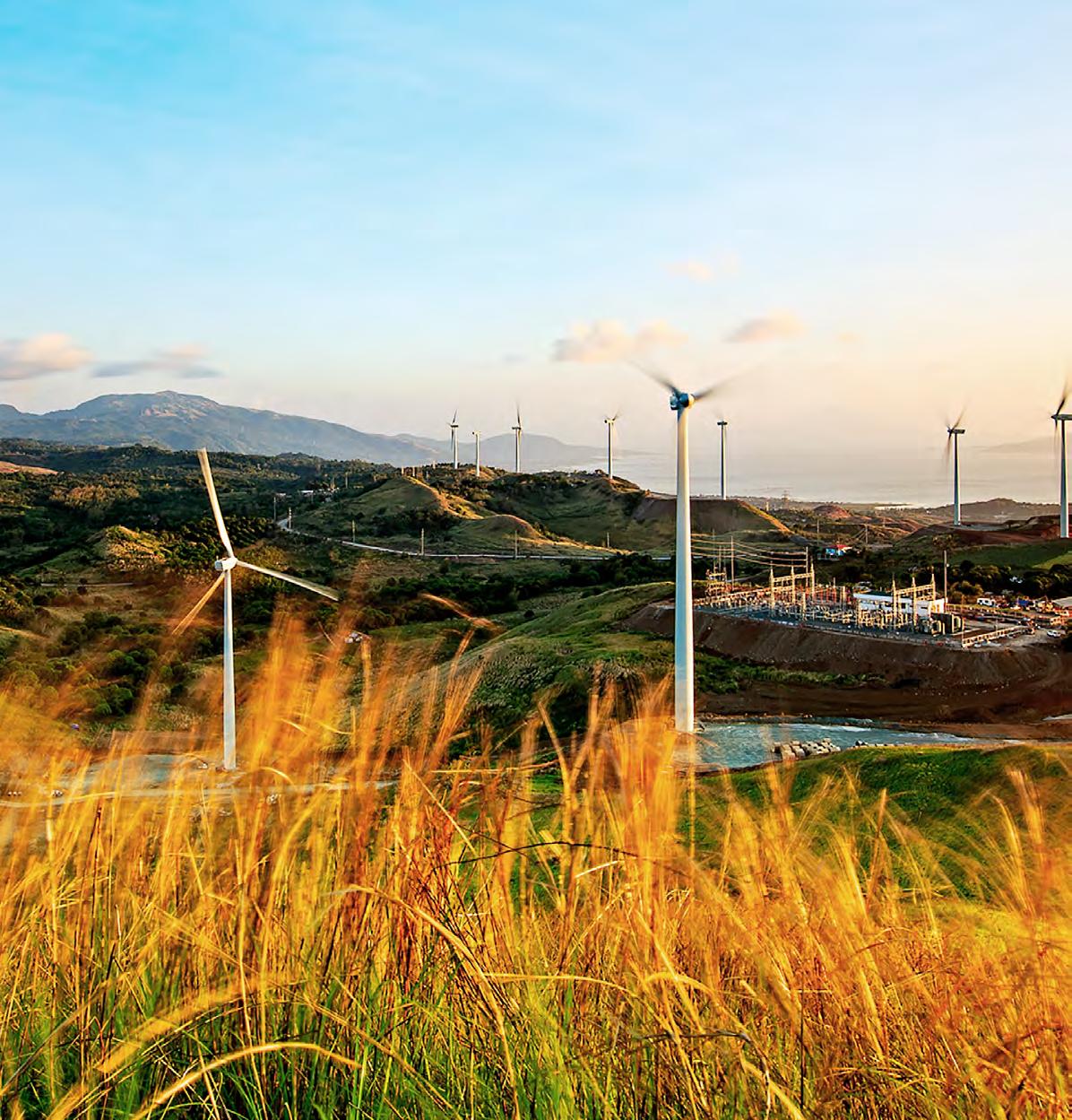
A partnership with Rizal provincial and local governments Serves as tourist destination that peaks at 130,000 visitors per week
Joint venture with Vena Energy (Equis)
Drive 40 kilometers southeast of Manila toward Pililla, Rizal, and green rolling hills start to appear, some reaching up to 300 meters above sea level. On this site sit 27 wind turbines from Gamesa of Spain, arranged in three clusters. Each turbine stretches up 125 meters, as tall as a 33-storey building. In total, these turbines produce 54MW of wind power per year, providing electricity to approximately 66,000 households in Manila.
Strategic placement and strong wind resources help make the Pililla wind farm a commercial success. It is also a lively tourist destination that helps support the local economy: During Holy Week, an average of 130,000 visitors travel to Pililla, increasing appreciation for renewable energy in the Philippines, and providing opportunities for residents to generate new streams of income.
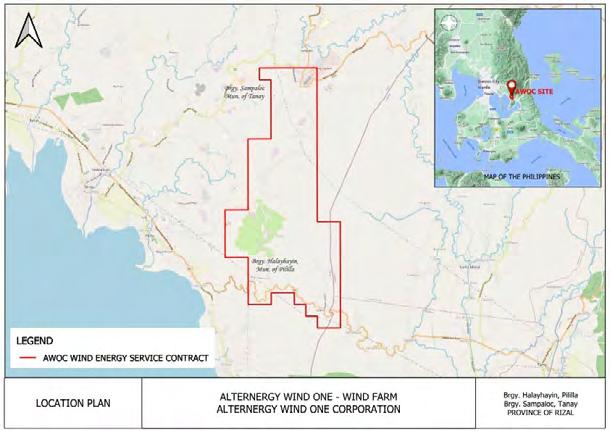
A series of pioneering activities—from an innovative financing structure that helped get Pililla off the ground, to a Visitor’s Center that promotes awareness of the benefits of renewable power—make Pililla a benchmark for future projects.
Feed-in-Tariff rules presented financing challenges, and to help overcome them, Alternergy encouraged three local banks to form a syndicate to fund the project.
When the Pililla Wind Farm became a tourist attraction, Alternergy provided training to members of its host barangay to make souvenirs to sell to sightseeing visitors.



Due to its proximity to Manila, the Pililla Wind Farm became a landmark destination and a choice for school field trips.
Local business activity flourished around the wind farm such as refreshment stands, coffee shops, and souvenir stalls.
The consortium, which consisted of local commercial banks Banco de Oro, Rizal Commercial Banking Corporation, and China Bank, came together to offer $105M in project financing: the first non-recourse wind project financing by an entirely local bank syndicate, and the country’s first non-recourse wind financing for a Feed-in-Tariff project. The formation of the syndicate and the resulting financing structure led the International Finance Corporation (IFC) to award the Pililla project a Sustainable Energy Finance Award.
As the first wind farm project in Luzon outside of the Ilocos region, Pililla sits on land that is either owned by Alternergy Wind One Corporation or is leased from the Rizal Provincial Government and from private individuals and corporations. Pililla is interconnected with the distribution grid of Meralco through a dedicated, point-to-point sub-transmission line, located just 10 kilometers from the main line.
The power produced by the Pililla wind farm reduces carbon emissions by 73,000 tons per year, but its influence on sustainability goes far beyond its generation capacity.
The close proximity to the main power load of the Luzon grid allows for low transmission losses and unconstrained dispatch of wind-powered electricity.

The power produced by the wind farm reduces carbon emissions by 73,000 tons per year, but its influence on sustainability goes far beyond its generation capacity. Alternergy partnered with World Wide Fund for Nature (WWF) to create a first-of-its-kind Visitor’s Center aimed at educating the waves of tourists coming to the site each week. Families, busloads of school children, and visitors from around the region learn about the benefits of wind power through 18 information panels inside the center. The popularity of the wind farm has led to numerous independently created Facebook pages and online groups set up to celebrate its striking scenery and clean-energy benefits.
The Pililla Wind Farm set up a visitor info center in partnership with WWF, where visitors and the local community learn about the benefits of clean energy. Alternergy teamed up with WWF and Google


Highlights
12.5 MWp embedded utility solar power plant in Misamis Oriental, Mindanao
First large-scale solar PV project in the country built under a bilateral power supply agreement (PSA) with local utility
First bilateral solar PSA approved by the Energy Regulatory Commission Became a subsidiary of Alternergy in June 2022

Overview
On the island of Mindanao, the quickly growing demand for power has been met by poor transmission infrastructure, and a heavy reliance on coal and diesel power plants.
With its 12.5 MWp Kirahon solar farm, Alternergy’s solar company, Solar Pacific, supplies approximately 8,900 local households and businesses with over 18 million kWh of clean, renewable energy each year. The solar PV power plant, which sits on 15 hectares of private property, interconnects directly to the local electric utility, Cagayan Electric Power & Light (CEPALCO), minimizing blackouts and enhancing grid performance. Since operations began in 2015, the Kirahon
Since operations began in 2015, the Kirahon solar farm has generated 104% of the expected energy output, thanks to its use of the highest-quality technology and worldclass plant operations.
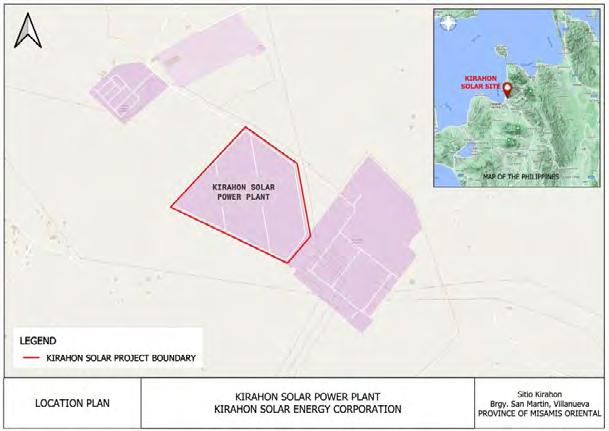
solar farm has generated 104% of the expected energy output, thanks to its use of the highest-quality technology and world-class plant operations.
The project began in 2013 when Solar Pacific, Alternergy’s solar developer, and CEPALCO entered into a 25-year power supply agreement (PSA) for the sale of energy to be generated by KSEC. This was the first bilateral PSA in the Philippines for a large-scale solar PV project, demonstrating that offtake agreements can happen outside of the government’s Feed-in-Tariff program. Bilateral contracts enable developers to work directly with the customers who need power the most and give off-takers the assurance that green power will be supplied at a fixed cost for the long term.
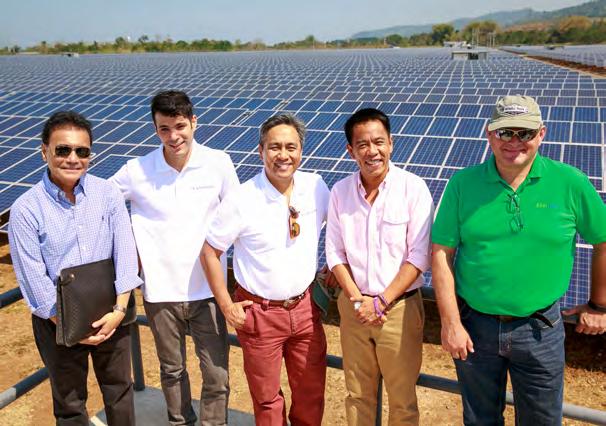


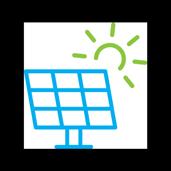
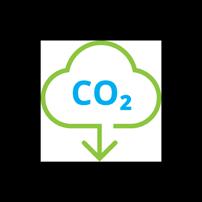

The Kirahon Solar PSA was the first of its kind to be reviewed and approved by the Energy Regulatory Commission (ERC), helping to pave the way for future renewable power bilateral agreements. While negotiating the first non-recourse project financing in the Philippines for a utility solar power project from local lender RCBC, Solar Pacific embarked on an educational journey with all of the major stakeholders, including the lender, the utility off-taker, the ERC, and the local communities who supported the project. Since that time, the market for bilateral PSA contracts in the Philippines has flourished. In June 2022, 50% of the equity of KSEC was acquired by Alternergy Holdings Corporation, becoming its direct subsidiary

Engineering innovation: combining flow of Asin, Hungduan, and Ibulao Rivers bundled into single project to maximize power output Close community consultation with the indigenous Tuwali people to preserve natural beauty of their ancestral domains
Partnership with Renova Renewables of Japan and Sta. Clara International

The Asin, Hungduan, and Ibulao Rivers sit at the foot of 2,000-year-old rice terraces, home for centuries of the Tuwali tribe of Kiangan. An essential element for agriculture and daily life for all who live near them, these rivers will also serve as the site of a portfolio of three run-of-river hydro facilities.
The municipality of Kiangan in Ifugao province sits on the banks of the ancient Ibulao River. Legend has it that the mythical ancestors of the Ifugao people, Kabiggat and his wife Bugan, settled and founded a village that could thrive beside these waters. The Ibulao River, along with the Asin and Hungduan Rivers, will give birth to a sustainable development for the local communities via the Kiangan run-of-river hydro complex of Kiangan Mini Hydro Corporation (KMHC).
Our engineering team determined that by combining the flow of the Asin and Hungduan Rivers, then bringing their aggregate power to the powerhouse at the Ibulao River—would lead to a greater overall power output. Once completed, the Kiangan Hydro project will have a combined capacity of 17.4 MW. Project ownership of Kiangan Hydro was transferred to KMHC in 2013, and in 2015, the DOE awarded the Hydro Service Contracts over the three rivers to KMHC.

of Households
Electrified


Construction
236 local hires, of which 178 are Indigenous Peoples)

Tons
CO 2 Reduction


The rich cultural heritage and stunning natural beauty of the project site necessitated especially close community engagement every step of the way. Alternergy has taken great care to ensure that KMHC’s project has all the necessary permits and consents. Alternergy has obtained major regulatory permits, among them the DOE Confirmation of Commerciality, LGU endorsements, DENR Environmental Compliance Certificate, NWRB Water Permit, BOI Certificate of Registration and Entitlement for Zero-rated VAT, NCIP Free and Prior Informed Consent (FPIC) process and Certificate of Precondition, and hundreds of long-term land lease agreements with local farmers and MOAs for the Road Right of Way with Host LGUs.
Every Alternergy project must first be thoroughly assessed by its host communities before receiving any endorsement. Alternergy has always put the local populace first, and proactive engagement has been ongoing from conceptualization. As the barangays of Bokiawan, Dalligan, and Mungayang are populated by ancestral domains of
To generate sustainable livelihood, Alternergy rehabilitated the Barangay Water System of Upper and Lower Bokiawan and improved the Farmto-Market road of Barangay Dalligan.

To help the indigenous people propagate their way of life and preserve their heritage, Alternergy supported the Rice Terraces IKSP Learning Resource Center and the Community Heritage Library.


the indigenous Tuwali people, Alternergy sought their consents and secured approval of the National Commission on Indigenous Peoples in December 2018.
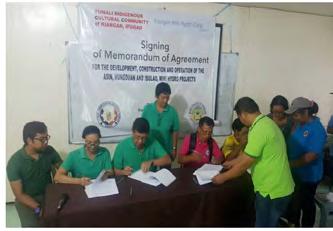
Alternergy knows that to travel far, one needs to travel together. That is why we have been selective in our choice of partners for Kiangan Hydro.
Renova Renewables of Japan is our key equity partner in Kiangan Hydro, their first investment in the Philippines. Renova is a listed Japanese renewable company with 600MW assets in operation and under construction. Joining Renova is Sta. Clara International Corporation, a Philippine construction engineering firm with substantial experience in hydro projects.
Sta. Clara International was awarded the Civil Works Contract, while Gugler Water Turbines of Austria signed on as the Electro-Mechanical Works supplier. The contract for the 3 km transmission line was granted to MN Electro Industrial Supply and Services, and an Owner’s Engineer Contract was given to Pacific Tech Solutions.
The Ibulao River, along with the Asin and Hungduan Rivers, will give birth to a sustainable development for the local communities via the Kiangan run-of-river hydro complex of Kiangan Mini Hydro Corporation (KMHC).
Apart from these, extensive technical studies have been conducted on the three rivers. These include Comprehensive Feasibility Study, an Optimization Study, Hydrology Revalidation, Grid Impact Study, Facility Study and Detailed Engineering Design.
The Development Bank of the Philippines granted a loan of PHP 2.65 billion for the completion of the Kiangan hydro project, which will consolidate the hydropower output along the three rivers and usher in clean energy for the Tuwali people.
KMHC donated color printers and computers to Bokiawan Elementary School and Mungayang National High School.
Amidst the raging pandemic, we were there alongside our frontliners by providing handwash systems to the
To prevent landslides, our projects are constructed to ensure the safety of its host communities.

We respect and uphold the rights of our host Indigenous Cultural Communities. Giving due respect to the culture and way of life of the communities.

Alternergy’s balance sheet includes more than just finances. We use four measures to benchmark our success: Financial Profitability Climate Change Mitigation
Host Community Benefits Employee Satisfaction
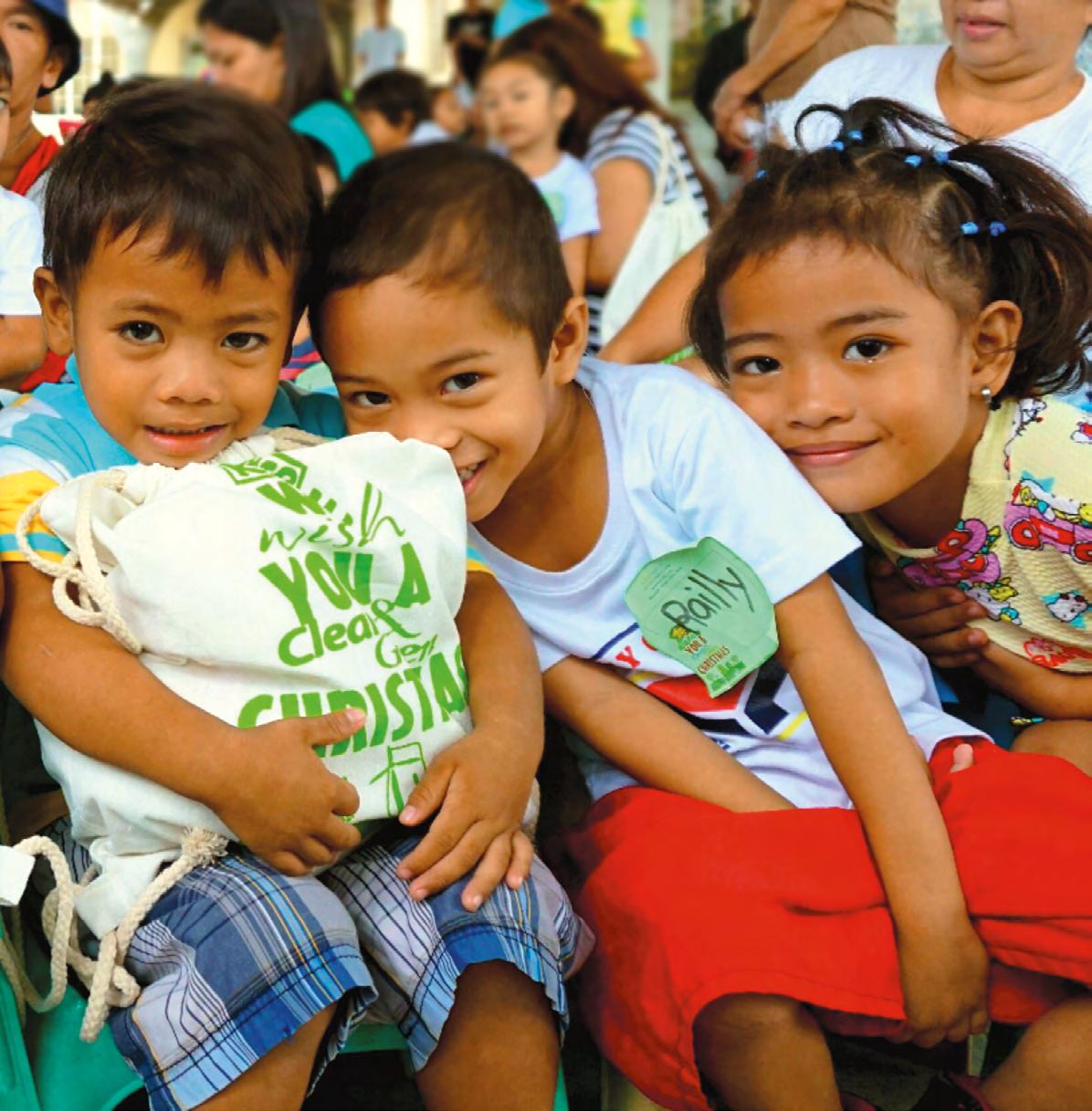
The first priority is financial profitability, measured by annual cash flow generation in terms of per megawatt installed or invested capital.
Alternergy is also able to generate economic value which benefits the overall economy and its other stakeholders such as suppliers, employees, host communities, the government and providers of capital.
Below is the economic value table which shows the 2021 Economic Value Generated, Distributed and Retained by the three operating plants of Altenergy Holdings Corporation, namely, Alternergy Wind One Corporation, Kirahon Solar Energy Corporation, and Solar Pacific CitySun Corporation.
2021 Economic Value Table (in PHP) 201-1
Direct Economic Value Generated
Operating Costs
Employee Wages and Benefits
Payments to Providers of Capital
Payments to Government Community Investments
Economic Value Distributed
Economic Value Retained
1,339,174,513
945,814,100
393,360,413
The second priority is climate change mitigation, measured in terms of annual tons of carbon dioxide emissions displaced or avoided. Alternergy is strictly focused as a renewable power company and will not invest in fossil fuel generation such as coal, fuel oil, natural gas and nuclear power. Wind-diesel and solar-diesel hybrid plants may be considered in island grid locations.
Whenever possible, carbon credits will be generated from each renewable power project.

Alternergy’s ultimate measure of success is its impact on the next generation. The power created from our wind and solar farms in operation displaces 89,298 tons of carbon emissions per year that would have otherwise been created through fossil fuel generation. This is equal to 4,059 less jeepneys plying our roads. Our projects currently under construction can further avoid 49,792 tons of carbon emissions per year, equivalent to 2,263 less jeepneys, a 55% increase in emissions displaced.
Since we are relying on renewable resources such as solar, hydro and wind, we are highly dependent on the climate, on seasonality of weather, and on the long-term patterns of climate change. We have therefore strategically chosen to invest in three different renewable resources, such that their seasonality and diurnal patterns complement each other in terms of daily or annual electricity generation.
Protection of natural habitat
Alternergy’s project sites pay tribute to the natural beauty that surrounds them. By conducting best-practice wildlife and ecological assessments at the start of each project, we take every possible
The power created from our wind and solar farms in operation displaces 89,298 tons of carbon emissions, equal to 4,059 less jeepneys plying our roads.
step to ensure what we develop is in harmony with the environment.
We wish to protect watersheds of rivers we tap for energy through run of river hydro projects that do not create a negative footprint from damming of rivers which flood upstream terrain.
The third priority is to provide host community benefits, measured in terms of annual households energized each year. At the moment, this is equivalent to 74,902 households. Alternergy considers the role of the community as a “social fence” in power projects in emerging countries. Alternergy is committed to funding this third priority beyond the mandatory Php0.01/kWh, pursuant to DOE Regulation 1-94. Additionally, Alternergy will voluntarily contribute a percentage of net income to the benefit of host communities.
Benefits to host Indigenous Cultural Communities (ICCs)
Local residents of host communities, with sufficient qualifications, are given priority employment throughout the life cycle of the project—from pre-development during public consultations and engagements and permitting to construction stage all the way to operations and management. Our projects also conduct special training courses to interested
individuals to better equip them with knowledge and skills necessary for the required jobs and increase their employability. In addition, Alternergy’s CSR team for each of its project is composed of qualified local residents.
A major contribution of our renewable projects especially those located in the rural areas and within the ancestral domains of the indigenous peoples is a significant improvement of the infrastructure in the communities. Access roads are being opened on areas that have long been considered remote. New bridges and farm-to-market roads are also built not only to serve the movement of the equipment and staff of our energy projects but also to provide better mobility to the local residents who usually travel through longer routes and by foot. Through our CSR, water systems are also being rehabilitated to improve the supply of potable water in our host communities. Likewise, hand washing system, public toilet facility and e-community centers are some infrastructures being funded through our CSR projects.
As host communities, the local governments and the indigenous peoples received royalty shares in the revenues derived from the energy projects. These royalties are credited to the LGUs and ICCs that they can use to directly fund their respective projects to better improve welfare of the people and the communities. Over and above the committed royalty fees, we allocate annual CSR funds during the pre-construction, construction and operational stage for each of the projects. To obtain community buy-in, cooperation, full support and to generate optimum impact on the any CSR funded activity, the CSR projects
were identified collectively by our community stakeholders based on their needs. Surveys and dialogues are being conducted in the identification and prioritization of these CSR activities. Ideas were also sought from the local government officials and other project stakeholders.
A major contribution of our renewable energy projects especially those located in the rural areas and within the ancestral domains of the indigenous peoples is a significant improvement of the infrastructure in the communities.
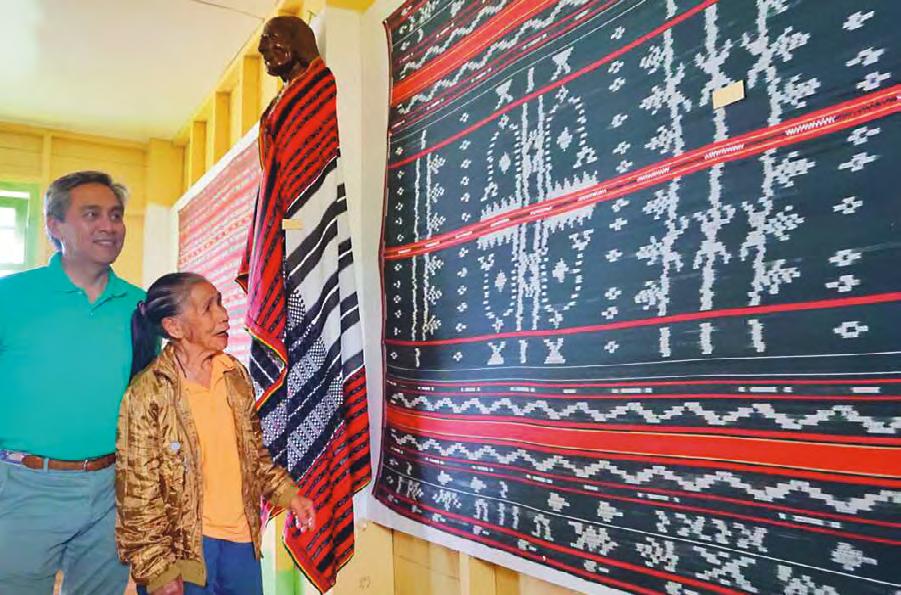

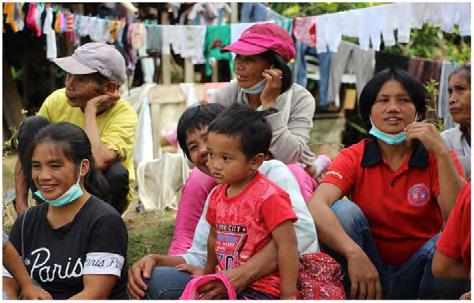
Our projects present in the ancestral domains help indigenous peoples organize their group into legal entities to strengthen and empower themselves. We provide funding to conduct series of workshops to form their indigenous peoples structure and draft their development program which would guide them in managing their organization and address the needs. Royalties received from our projects also serve as seed capital to fund their development programs. In particular, Alternergy assists in the formation and accreditation of Indigenous People’s Organizations (IPOs) of its host communities and provides technical assistance and funds in formulation and implementation of their Community Royalty Development Plan (CRDP) and Ancestral Domain Sustainable Development and Protection Plan (ADSDPP).
Compensation for affected properties/ assets during construction and operation as provided for in MOAs signed between Alternergy and ICCs
Alternergy is committed to upholding and respecting the inherent rights of the indigenous peoples on their land and resources. Any property, asset or resources that are affected during the construction and operation of the projects are given due compensation. Example land, crops, trees, aggregates, among others. Sacred and culturally significant lands, such as ancestral burial grounds, are also respected and avoided.
Alternergy offers competitive lease, rents, or acquisition cost for the land areas that will be used or affected within our project sites. Third party realty consultants are engaged to conduct land valuation and appraisal studies to serve as benchmark for the lease/rents and acquisition costs.
Alternergy’s energy projects— especially those located in remote areas— become one of the largest taxpayers, driving local economic activity with the presence of new business centers, restaurants, and accommodation facilities. And with the construction of access roads and farm-to-market roads, the flow of local products and commodities improve significantly.
Alternergy has developed a comprehensive CSR program to be implemented over a project lifecyle.
Our CSR program—developed in consultation with our host communities to determine priority development programs—is focused on five key areas: Livelihood, Education, Health, Environment, and Disaster Risk Reduction & Emergency Preparedness.
A new source of power often means new streams of income. Here are some ways Alternergy has helped create economic opportunity.
Once the Pililla wind farm became operational, tourismincreased in the surrounding area. Alternergy helped
residents of the nearby Halayhayin village gain a new stream of income by teaching them to construct bamboo windmills to be sold in local shops. In the months that followed, we scaled the program by promoting and developing new lines of goods.

At the request of the Municipal Agriculture Office of Pililla, The Pililla Rizal Visitor Center hosted a seminar on black bug infestation. Members of farmers’ cooperatives attended to learn how to combat the pests.
The rice terraces and rushing rivers in Ifugao province are perfect for hydro power and also serve as a draw for tourists. To help increase economic activity in the area, Alternergy sponsored the prizes for the Gotad Trek-a-thon, a marathon event held along a culture-rich and scenic trail.
Two hundred and fifty marginalized schoolchildren from Hulo and Bagumbayan, two other villages in proximity to the Pililla wind farm, received school bags filled with supplies at the start of the school year. On a yearly basis, Alternergy team members distribute the supplies and share the benefits of renewable power.
The Rice Terraces Indigenous Knowledge Systems and Practices Learning Resource Center and Community Heritage Library is one outlet for Ifugao community members to protect, conserve, and nurture the Ifugao rice terraces culture. Alternergy donated to the library to purchase display cabinets and contribute toward the lighting of displays.
When the Bugarin Elementary School near Pililla, Rizal upgraded its campus, Alternergy partnered with the school’s
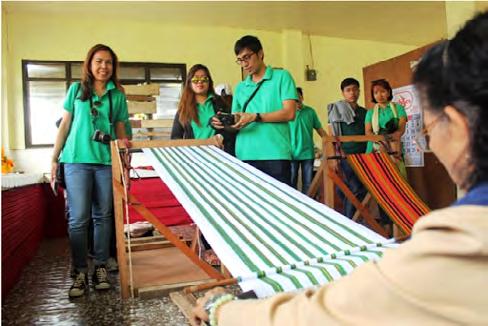
Parents-Teachers Association. We provided assistance in completing a roof for an outdoor study and play area.

Many families in the communities where Alternergy works do not have the resources to purchase basic hygiene items on a regular basis. When Alternergy identified this challenge, it put together kits containing shampoo, soap, toothbrush, and toothpaste, and distributes them to children in need.

When Typhoon Niña damaged homes in Dalligan village, near the site of the Kiangan hydro power project, Alternergy stepped in with assistance and materials to repair the roofs of affected structures. Alternergy proactively responds to disaster providing relief to typhoon-stricken areas.
Rizal province decided to enhance its fire prevention efforts, and Alternergy supported by participating in the programming and donating a two-way radio.
Alternergy partnered with the Rizal Provincial Government to support its medical outreach activities. Members of the Alternergy team delivered needed supplies to help support the initiatives.
initially cause landslides or run-offs. After construction, we make sure to strengthen those areas that were disturbed with anti-erosion measures.
Soil erosion is a challenge faced by many communities in the Philippines, and planting bamboo near riverbanks and waterways can help control the problem. In partnership with the Province of Rizal, Alternergy supported a bamboo planting activity, working alongside locals to put new plants in the ground.
Alternergy partnered with WWF-Philippines for its “Seize the Sun” project. Aimed at spreading awareness about the benefits of renewable energy in the Philippines, the project included the development of an information board for the Kirahon Solar Power Plant that guides visitors through the process of generating power from the sun’s rays.

In building run-of-river hydro projects, it is unavoidable that we have to cut some trees. We replace these cut trees through tree planting. During the construction phase for these projects, it also unavoidable that we may
As part of the “Seize the Sun” project with WWF-Philippines, Alternergy conducts environmental education sessions with students of the Kirahon Elementary School. In addition, Alternergy has provided funds for classroom upgrades, building improvements, and school supplies.


The fourth and final priority is employee satisfaction. Alternergy aims to create a work environment with a balanced worklife atmosphere that is both challenging and fun. Employees are provided with adequate health and medical benefits. Priority is given to the employment, training, and development of local talent.
All employees will be involved in planning and organizing host community activities.
In breaking new ground for renewable energy in the Philippines, Alternergy starts with the way the company is run. Intentionally lean and focused on providing team members with purpose

and autonomy, we have a flat organizational structure. Our culture is often described as family-like and nurturing.

In the yearly Alternergy outing, we bring the entire team on the road to learn about new sustainable practices in the country. A team lunch is held every week, and special activities are organised around Mother’s Day and Father’s Day. Family members are welcomed to the office, and Christmas parties always include an element of outreach to the needy. We believe that to do things differently, you need to start with your own house —and this is how we choose to run ours.
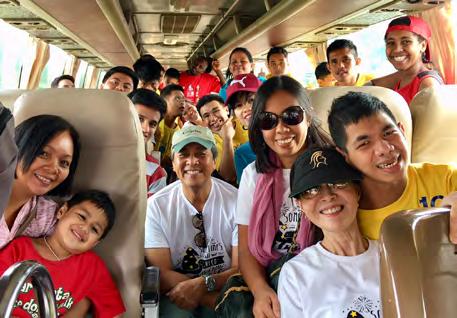

As a renewable power company, we create environmental and social value contributing to the achievement of the United Nations Sustainable Development Goals (SDGs). Our nature of business directly targets SDG 7 (Affordable and Clean Energy) and SDG 13 (Climate Action). Likewise, our company culture and the way we work are aligned to the goals of SDG 5 (Gender Equality) and SDG 8 (Decent Work and Economic Growth).

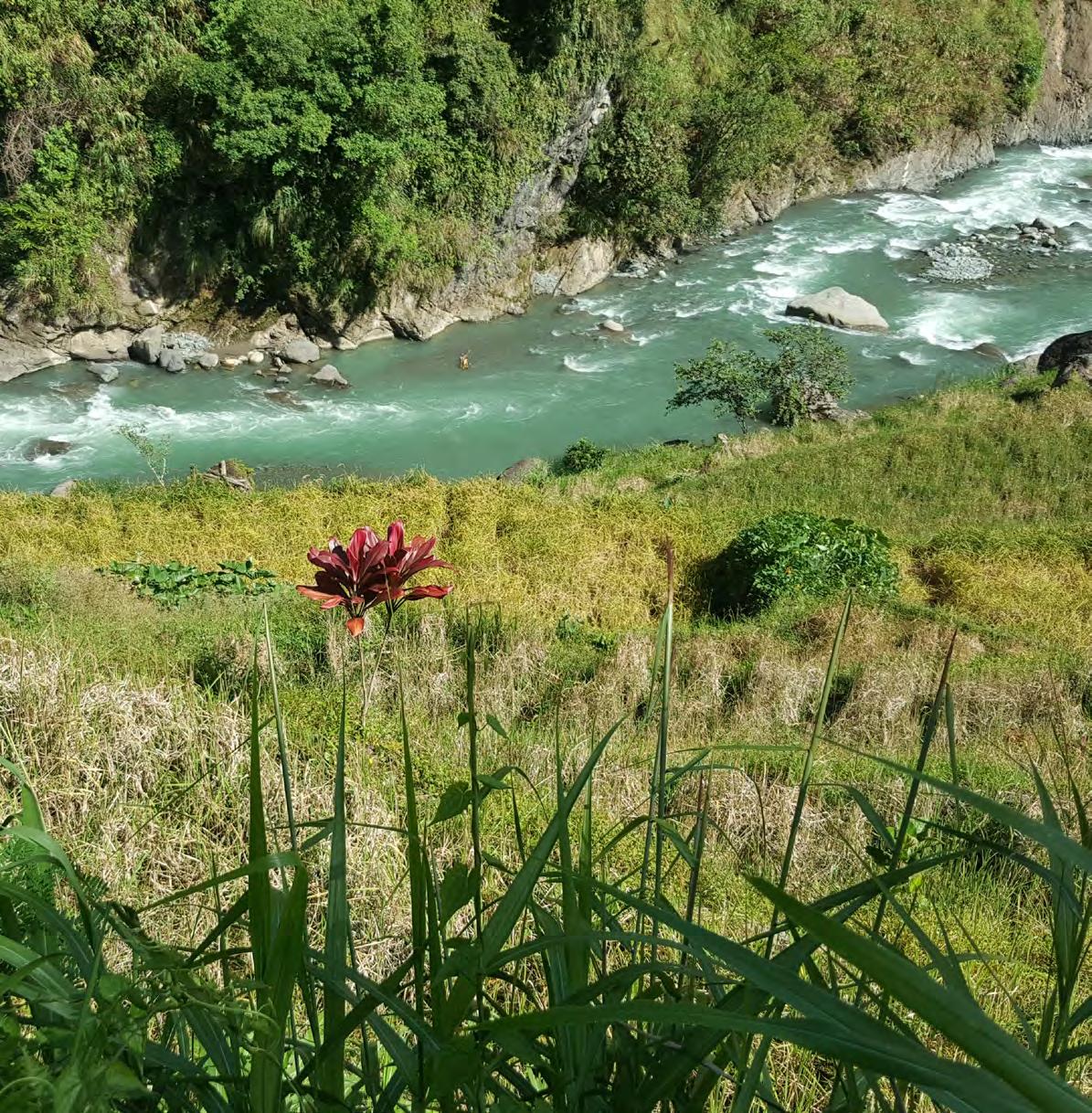

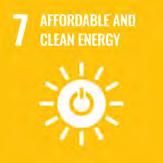
We proactively promote gender equality by hiring based on qualifications and not by gender. We uphold pay parity where employees in the same job are paid fairly regardless of gender or ethnicity. Alternegy has a total of 49 employees comprised of 22 female (45%) and 27 male (55%).
Alternergy also complies with legal requirements on family support and care providing special leaves such as parental leave for solo parents, special leave for solo parents, leave for victims of violence against women and their children, and special leave for women.
Alternergy exists to play a pioneering role in making the Philippines a leader in clean energy.
To date, we have 67.24 MW of installed renewable power.
We are contributing to the increase of renewable energy capacity in the country’s energy mix.
As mentioned, we proactively engage in renewable policy discussions with government agencies like the Department of Energy, the Energy Regulatory Commission, and National Renewable Energy Board.
Alternergy exists to play a pioneering role in making the Philippines a leader in clean energy.

Our projects create job opportunities. During project construction, majority of labor work is sourced from the locals. For instance, for Kirahon Solar Power Project, 350 local jobs were created. Correspondingly, for Dupinga and Kiangan Run-of-River Hydro Projects, 74 (including 36 Katutubong Dumagat) and 349 (including 236 local hires, of which 178 are indigenous people) were employed.
By the nature of our business or operations, there are compulsory training programs requiring selected employees to attend. These trainings would
most often involve highly technical subjects, but are not necessarily limited as such. Alternergy also recognizes the importance of continuing workplace learning, both internal and external, as well as other developmental interventions to help the employees acquire a higher level of skill, proficiency and competence so that they could efficiently and effectively discharge their duties and responsibilities. Alternergy’s work arrangement for its employees is flexible. Employees could manage their own time and be responsible for their deliverables.
Meanwhile, benefits provided for the company’s 27 regular employees and not to part-time or contractual staff include insurance, HMO coverage for two qualified dependents upon six months of engagement, discretionary performance bonus, and paid maternity leave on top of SSS benefit.

Consistent with Alternergy’s commitment to environmental sustainability, we modeled the tons of carbon dioxide equivalent (tCO2e) mitigated through the installation of renewable energy, against a business-as-usual projection for the power mix. We estimate that our plants in operation and those under construction could result in 139,090 tCO2e mitigated.
We estimate that our plants in operation and those under construction could result in 139,090 tCO2e mitigated.

sustainability reporting process
Our reporting process described in four steps below are in line with the GRI Reporting Principles of Materiality, Sustainability Context, Stakeholder Inclusiveness, and Completeness.
1) Sustainability Awareness
Awareness of the importance of sustainability strategy and impact.
2) Identification of Material Topics
Identification of impact areas by a sustainability working group across the company's value chain and evaluation of operations and management approaches.
3) Gathering of Data Collection of data and accomplishments to support action on material topics.
4) Management Review Management's review and acceptance of material topics and collected information.
102-46 | 102-47 | 103-1 | 103-2 | 103-3
We examined our different value and supply chain as well as consulted our stakeholders to get to this baseline materiality topics which is aligned to our Quadruple Bottom Line Philosophy. This will be subject to annual review for relevance and accuracy.
We keep track of our progress on the material topics most important to our stakeholders and assess the effect of our activities on the environment, society, and the economy.
Financial Profitability
Direct Economic Value generated and distributed 201-1
Topic Boundary: Areas of operation
Financial implications and other risks and opportunities due to climate change 201-2
Topic Boundary: Within Philippines only
Significant indirect economic impacts 203-2
Topic Boundary: Areas of operation
Interactions with water as a shared resource 303-1
Topic Boundary: Areas of operation
Significant impacts of activities, products, and services on biodiversity 304-2
Topic Boundary: Areas of operation
LOCAL COMMUNITIES
Operations with local community engagement, impact assessments, and development programs 413-1
Topic Boundary: Areas of operation
Incidents of violations involving rights of indigenous peoples 411-1
Topic Boundary: Areas of operation
Employee Satisfaction
Benefits provided to fulltime employees that are not provided to temporary or part-time employees 401-2
Topic Boundary: Within the company
TRAINING and EDUCATION
Programs for upgrading employee skills and transition assistance programs 404-2
Topic Boundary: Within the company
Ratio of basic salary and remuneration of women to men 405-2
Topic Boundary: Within the company
Our partners co-invest with Alternergy. They believe in promoting clean energy, in replacing our dependence on fossil fuels, and in transforming host communities with sustainable investments.
Our partners are our project lenders who likewise believe in allocating more financial capital to sustainable lending.
Our partners are our host communities. They have given their consent for Alternergy to build sustainable projects in their community.
Our partners are our employees They chose to work with Alternergy because they believe in being involved with an enterprise that addresses climate change.

Stakeholder
Co-investors/ Shareholders
Provide resources and oversight
Business performance
Timely and transparent disclosures
Off-takers/Clients
Buyers of energy generated
Financiers/Creditors
Equipment/ Service Suppliers
Provides capital to support business Provider of wind and water turbines, solar panels, technical consulting, contractor expertise
Regular meetings Regular communications and business updates Regular communications Supplier accreditation
Downtime level of service
Ensure proper maintenance of renewable energy systems
Financing additional projects
Governance and business ethics
Government Regulator
Policy maker and implements regulations which govern sector
Scheduled and unscheduled audits
Regular communications Proactive consultation
Host Communities Employees
Host of renewable energy equipment
Regular dialogue and consultation with host community re project implementation and concerns
Governance and business ethics Compliance with legal and regulations
Governance and business ethics
Comply with financing terms and agreements Practice supplier accreditation and ethical procurement policies
Follow rules and regulations
Provide timely and accurate reports
Implement company objectives and represent company
Regular townhall meetings Performance appraisals
Involvement of community Employee welfare and benefits
Partner in implementation of projects and community benefit programs
Ensure work-life balance, good working environment and employee fulfillment
Media/ Capital Markets
Accurate reporting on company performance
Media and analysts’ briefings
Business performance
ESG Impacts
Provide timely, transparent and accurate updates on the business
The Company is committed to observing the best practices of good governance. Hence, the Board of Directors approved and adopted the Company’s Manual on Corporate Governance, incorporating therein the corporate governance standards of the SEC with respect to publicly listed companies. The Manual is a supplement to the Company’s Amended By-Laws and shall serve as a guide to the Company and its various stakeholders on the Company’s continued commitment to good corporate governance.

Practical oversight of the Company’s corporate governance standards is exercised through the Board’s four standing committees: the Audit and Risk Management Committees; the Corporate Governance Committee; and the Related Party Transactions Committee.
The Audit and Risk Management Committees are tasked with recommending the appointment of external auditors and monitoring the system of internal controls and corporate compliance with laws, regulations, and code of ethics. They are also tasked with assisting the Board in the performance of its oversight responsibility over the finances of the Company.
The Corporate Governance Committee assists the Board in the performance of its corporate governance responsibilities. It is also tasked with reviewing and evaluating the qualifications of all persons nominated to the Board as well as those nominated to other positions requiring Board approval.
The Related Party Transactions Committee is responsible for reviewing all material related party transactions and is also responsible for checking
Compliant with best practices and principles on good corporate governance
Board consists of 7 directors with 2 independent directors
Board has 4 committees with a minimum of 3 members each:
Audit Risk Management Corporate Governance Related Parties Transactions
compliance with the related party transactions policies as may be adopted by the Board.
The Audit and Risk Management Committees shall endeavor to meet at least four times every quarter while the Corporate Governance Committee and Related Party Transactions Committee shall endeavor to meet at least three times in one year.
Each committee is composed of at least three (3) members appointed from among the members of the Board and is chaired by one of the appointed members to such committee.
Are community-driven, identified by them through consultations and carried out collaboratively in a timely manner
Have substantial communitywide benefits rather than to only a select few
Are tangible, easily monitored and accounted for, and with long-term benefits
Actively support host communities without displacing the government in its mandate to provide welfare and service to the people
Are focused on five priority areas: livelihood, education, health, environment, and emergency and disaster risk reduction & management
Livelihood: Programs and projects that showcase the entrepreneurial spirit of our host communities, seeking to uplift the economic conditions of our stakeholders’ communities and generating livelihood opportunities
Education: Skills training and provision of education-related tools and infrastructure
Health: Programs and projects that promote health and safety in the community
Environment: Programs and projects aligned with global goals of mitigating climate change, promoting environmental protection, and encouraging environmental awareness including disaster risk reduction
Emergency and Disaster Risk Reduction & Management: Programs and projects that provide assistance in responding and managing emergency and disasters as well as in mitigating its impact to the communities, environment and the people
Support, construction, and renovation of schools
Workshop on disaster risk response
Typhoon relief packs
Donation of school and office supplies and equipment
Provision of hygiene kits
Rehabilitation of barangay water system
Improvement of farm-to-market road
Regular community clean-up
Participation in customary rituals and dances prior to construction work
The COVID-19 pandemic was undoubtedly an overwhelming event. Prioritizing the health and safety of its employees, a work-from-home setup was adopted. Related workplace guidelines were also established. For host communities, Alternergy supplied food and medical supplies.

For employees
Work-from-home set-up with team meetings via Zoom
Employee salaries continued to be paid
Contractuals’ allowances paid in advance
Plant-based engineers remained on site
All project site visits suspended during lockdown Management prepared post-lockdown workplace guidelines
For communities/LGUs
Donation of simple medical equipment/oxygen tank
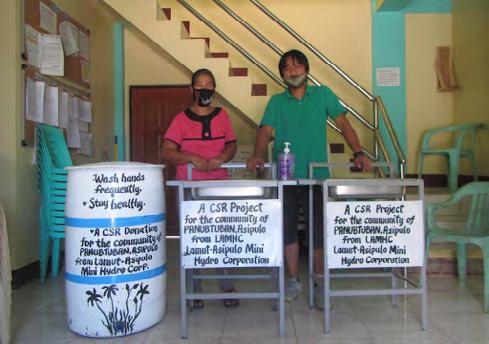

Donation of handwashing system Donation of rice and money Meals for frontliners
Meal donation for low-income families during lockdown
Name of Organization
Chain
Stakeholder Engagement
102-41 102-42 102-43 102-44
Reporting Practice 102-45 102-46 102-47 102-48 102-49 102-50 102-51 102-52 102-53 102-54 102-55 102-56
List of stakeholder groups
Collective bargaining agreements
Identifying and selecting stakeholders
Approach to stakeholder engagement
Key topics and concerns raised
included in consolidated financial statements
Defining report content and topic boundaries
List of material topics
Restatements of information
Changes in reporting Reporting period
Date of most recent report
Reporting cycle
Contact point for questions regarding the report
Claims of reporting in accordance with the GRI standards
GRI Content Index
External Assurance
Number(s),
GRI
Explanation of the material topic and its boundary
The management approach and its components
Evaluation of management approach
Direct economic value generated and distributed
implications and other risks and opportunities due to climate change
Economic
GRI
Explanation of the material topic and its boundary
The management approach and its components
Evaluation of management approach
Significant indirect economic impacts
and Effluents
Water and
Explanation of the material topic and its boundary
The management approach and its components
Evaluation of management approach
with water as a shared resource
GRI 101: Foundation 2016 MATERIAL TOPICS
GRI 103: Management Approach 2016
Explanation of the material topic and its boundary
The management approach and its components
Evaluation of management approach
Significant impacts of activities, products, and services on biodiversity
GRI 103: Management Approach 2016
Explanation of the material topic and its boundary
The management approach and its components
Evaluation of management approach Benefits provided to full-time employees that are not provided to temporary or part-time employees
GRI 103: Management Approach 2016
Explanation of the material topic and its boundary
The management approach and its components
Evaluation of management approach Programs for upgrading employee skills and transition assistance programs
GRI 103: Management Approach 2016
Number(s), Direct Answer and/or URLs
Explanation of the material topic and its boundary
The management approach and its components
Evaluation of management approach
of basic salary and remuneration
women
Rights of IPs
men
Explanation of the material topic and its boundary
The management approach and its components
of management approach
of violations involving rights of indigenous peoples
Explanation of the material topic and its boundary
The management approach and its components
Evaluation of management approach
with local community engagement, impact assessments,
development programs
Developers of Renewable Energy for Advancement, Inc.
Hydro Association
Energy
Solar and Storage Energy
Philippines
102-3 | 102-53
Alternergy Holdings Corporation
Level 3B, 111 Paseo de Roxas Building, Paseo de Roxas Avenue, Makati City 1229, Philippines
+632 7759 4327 contact@alternergy.com www.alternergy.com www.solar-pacific.com